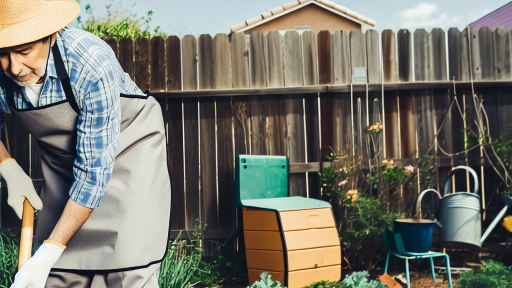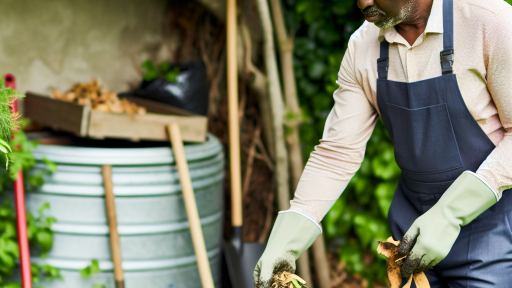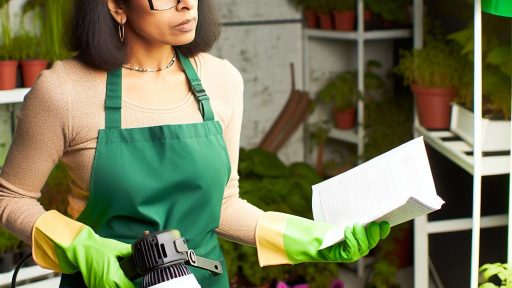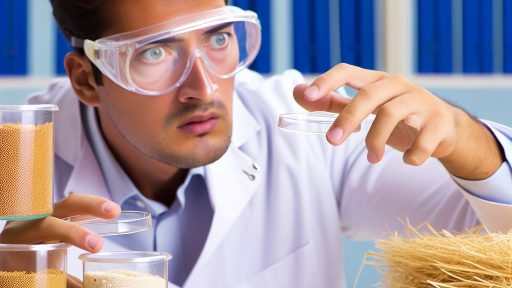Introduction to the Importance of Efficient Watering in Urban Agriculture
Efficient watering is crucial for urban agriculture’s success.
It ensures healthy plant growth in constrained environments.
Moreover, it conserves water, which is a vital resource.
Urban farms face unique challenges in obtaining water supply.
Limited space often leads to competition for resources.
Consequently, efficient watering techniques become necessary.
Improving watering practices enhances crop yields and sustainability.
Additionally, it helps manage costs related to water usage.
Urban farmers must adopt innovative methods to stay productive.
By utilizing smart technology, they can monitor water levels.
Furthermore, various watering techniques can cater to specific plant needs.
This adaptability aids in maximizing available space and resources.
Ultimately, efficient watering contributes to urban resilience.
As cities grow, urban agriculture will play a more significant role.
Thus, developing effective watering strategies is essential.
Transform Your Agribusiness
Unlock your farm's potential with expert advice tailored to your needs. Get actionable steps that drive real results.
Get StartedInvesting in these techniques promises long-term benefits for communities.
Efficient watering practices are vital for urban farming.
Comparison of Traditional vs. Modern Watering Techniques
Overview of Traditional Watering Techniques
Traditional watering methods have been used for centuries in agriculture.
Farmers often relied on manual labor and simple tools.
Common techniques included bucket watering and irrigation ditches.
These methods primarily depended on physical effort and timing.
Moreover, they required careful observation of weather patterns.
Benefits of Traditional Techniques
Traditional techniques can be more affordable for small-scale farms.
They often use fewer technologies, reducing initial investment costs.
Additionally, these methods are environmentally friendly by conserving water.
Farmers also have a deep cultural connection to these practices.
Challenges of Traditional Watering Techniques
Many traditional methods are labor-intensive and time-consuming.
Farmers may struggle to achieve consistent moisture levels.
Furthermore, these techniques can lead to uneven distribution of water.
Overview of Modern Watering Techniques
Modern watering practices have transformed urban farming dramatically.
They incorporate advanced technology, improving efficiency and effectiveness.
Common techniques include drip irrigation and automated sprinkler systems.
These methods utilize sensors and timers for optimal watering.
Benefits of Modern Techniques
Modern techniques significantly reduce water waste.
They offer precise control over watering schedules and amounts.
Moreover, these methods enhance crop yields through consistent hydration.
They also require less manual labor, freeing time for other tasks.
Challenges of Modern Watering Techniques
On the downside, modern methods can be expensive to install.
High-tech systems might require regular maintenance and expertise.
Showcase Your Farming Business
Publish your professional farming services profile on our blog for a one-time fee of $200 and reach a dedicated audience of farmers and agribusiness owners.
Publish Your ProfileFurthermore, reliance on technology can lead to issues if systems fail.
Comparative Analysis
Traditional methods emphasize labor-intensive practices.
Conversely, modern techniques prioritize efficiency and technology.
However, both methods have environmental implications.
While traditional methods can conserve water, modern techniques can enhance sustainability.
Ultimately, the choice depends on the specific needs and resources of the farmer.
Drip Irrigation Systems
Benefits of Drip Irrigation
Drip irrigation offers significant water conservation benefits.
It delivers water directly to plant roots.
This method minimizes evaporation and runoff.
Additionally, it reduces weed growth.
By using less water, drip systems lower utility costs.
They also promote healthier plant growth with nutrients.
This system can enhance crop yield effectively.
Moreover, drip irrigation allows for precise water management.
Installation Tips for City Farms
Begin by assessing your farm layout for optimal design.
Map out the areas where plants will thrive best.
Choose high-quality drip irrigation components.
Consider using pressure-compensating emitters for consistent water flow.
When installing, ensure correct spacing for emitters.
It is crucial to test the system for leaks.
Regular maintenance helps extend the system’s lifespan.
Lastly, monitor soil moisture levels to adjust settings accordingly.
Cost Considerations
While initial setup costs can be high, savings will be realized over time.
Investing in quality materials may reduce long-term expenses.
Additionally, calculate potential water savings versus installation costs.
Evaluate local programs that may subsidize drip irrigation systems.
Impact on Urban Agriculture
Drip irrigation is vital for urban farming sustainability.
It supports efficient use of water in limited spaces.
This method encourages community-based farming initiatives.
Furthermore, it promotes local food production in cities.
Gain More Insights: Harvesting Tips For Urban Farming Success
Rainwater Harvesting Methods for Sustainable Water Usage
Importance of Rainwater Harvesting
Rainwater harvesting is essential for urban farming.
It provides a sustainable water source for irrigation.
Moreover, it reduces dependence on municipal water supplies.
Types of Rainwater Harvesting Systems
There are several effective rainwater harvesting methods.
- Roof catchment systems collect water from building rooftops.
- Surface runoff systems gather water from paved areas.
- Subsurface systems capture water from aquifers.
Implementing Roof Catchment Systems
Roof catchment systems optimize space in urban settings.
Install gutters to channel rainwater into storage tanks.
Use a first-flush diverter to filter impurities from the initial rainwater.
Using Surface Runoff Systems
Surface runoff systems can enhance irrigation efficiency.
Create permeable surfaces to allow water infiltration.
Showcase Your Farming Business
Publish your professional farming services profile on our blog for a one-time fee of $200 and reach a dedicated audience of farmers and agribusiness owners.
Publish Your ProfileContour the land to direct water flow to designated areas.
Storage Solutions for Collected Rainwater
Proper storage is crucial for effective rainwater harvesting.
Choose tanks made of food-safe materials, such as polyethylene.
Regularly maintain and clean tanks to prevent contamination.
Legal and Regulatory Considerations
Check local regulations before implementing rainwater systems.
Some cities have laws governing rainwater harvesting.
Understand the guidelines to ensure compliance and sustainability.
Community Engagement in Rainwater Harvesting
Engaging the community can enhance the effectiveness of these systems.
Offer workshops to educate the public on rainwater benefits.
Create community projects to establish shared rainwater systems.
Furthermore, promote initiatives that encourage participation.
Uncover the Details: Harvesting Tips for Farm-Grown Mushrooms
Soil Moisture Sensors: Enhancing Watering Precision in Urban Farms
Introduction to Soil Moisture Sensors
Soil moisture sensors play a crucial role in urban farming.
They help monitor the water levels in the soil effectively.
This technology ensures you provide the right amount of water.
Benefits of Using Soil Moisture Sensors
These sensors optimize watering schedules.
They reduce water waste significantly.
Moreover, they boost plant health and yield.
- Improved irrigation efficiency
- Reduced labor costs
- Enhanced crop quality
Types of Soil Moisture Sensors
Multiple types of sensors are available on the market.
Capacitive sensors are popular for their accuracy.
Tensiometers measure soil tension effectively.
Resistive sensors are cost-effective for small-scale farms.
- Capacitive sensors
- Tensiometers
- Resistive sensors
How to Choose the Right Sensor
Consider your farm’s specific needs when selecting a sensor.
Evaluate factors such as soil type and moisture levels.
Additionally, budget plays a vital role in this decision.
Research different brands for reliability and features.
Implementing Soil Moisture Sensors
Begin by placing sensors in various locations across your farm.
Monitor the data regularly to determine moisture patterns.
Adjust your irrigation based on real-time readings.
Over time, refine your watering schedules for optimal results.
Enhancing Urban Farming Practices
Integrating soil moisture sensors enhances urban farming practices.
This technology promotes efficient water usage.
Ultimately, it leads to healthier crops and sustainable farming.
Discover More: Seed Starting Tips For Urban Farmers
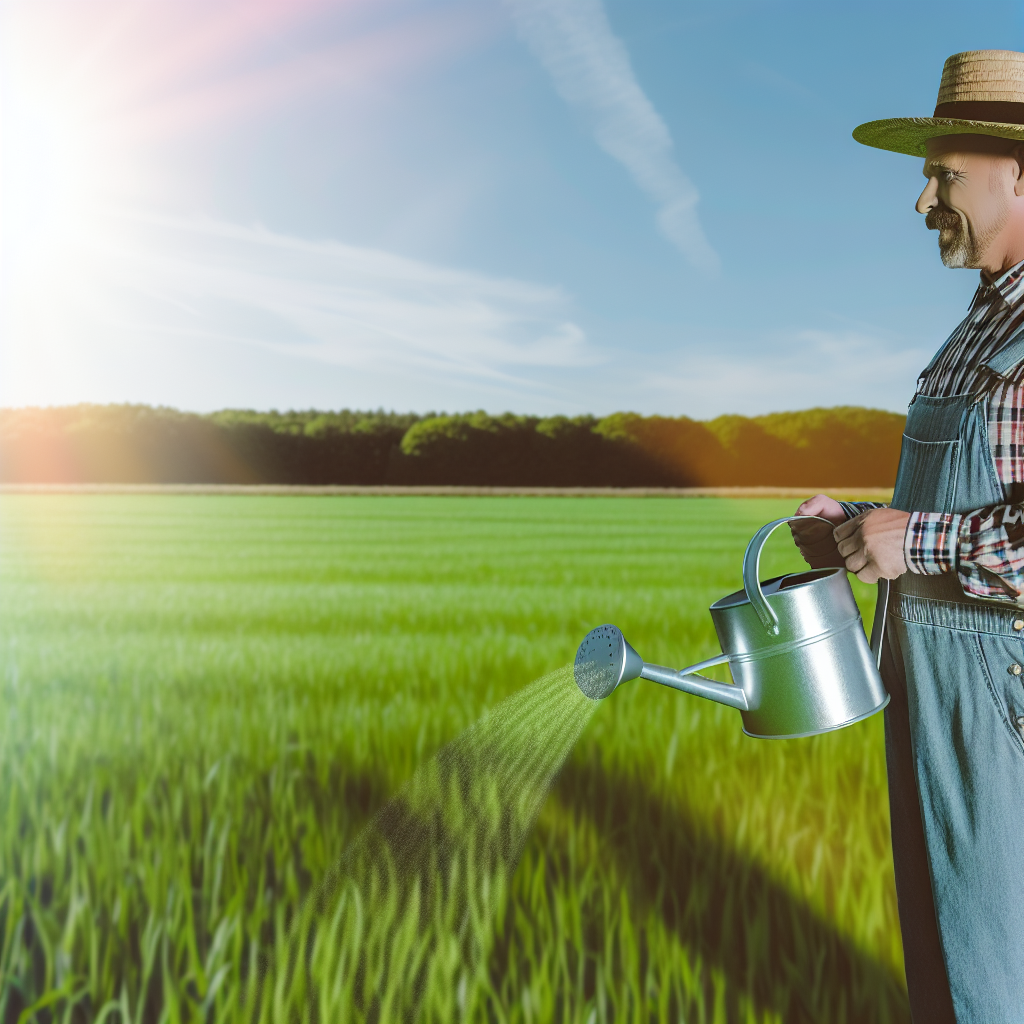
Automated Watering Systems
Technology Overview
Automated watering systems revolutionize urban agriculture.
They utilize technology to regulate and deliver water efficiently.
These systems often include drip irrigation, sprinklers, and smart controllers.
Drip irrigation directly delivers water to plant roots.
This method minimizes water waste and promotes healthy plant growth.
Sprinklers cover larger areas and can be adjusted for different crops.
Showcase Your Farming Business
Publish your professional farming services profile on our blog for a one-time fee of $200 and reach a dedicated audience of farmers and agribusiness owners.
Publish Your ProfileSmart controllers use sensors to monitor soil moisture levels.
They automatically adjust watering schedules based on weather conditions.
Benefits of Automated Watering Systems
Automated systems enhance resource efficiency.
They significantly reduce water usage compared to traditional methods.
Moreover, these systems save time for urban farmers.
A farmer can focus on other critical tasks.
Additionally, consistency in watering improves crop yields.
Plants receive the right amount of water daily.
Automated systems also minimize human error.
Farmers can program precise watering schedules easily.
Cost-Effective Solutions
Investing in automated watering can lower long-term costs.
Reduced water usage translates to decreased utility bills.
Furthermore, many local governments offer incentives for these systems.
Automated watering systems are practical for city-based farms.
They provide numerous benefits, from enhanced efficiency to improved yields.
Farmers can adopt these technologies to create sustainable urban gardens.
Gain More Insights: Harvesting Best Practices in Organic Gardening
Best Practices for Watering Schedules in Diverse Urban Climates
Understanding Urban Climatic Variations
Urban climates vary significantly due to factors like buildings and roads.
This can affect temperature, humidity, and rainfall patterns.
Consequently, cities often experience the urban heat island effect.
Understanding these climatic variations helps you schedule watering effectively.
Timing Your Watering
Watering early in the morning is usually most effective.
During this time, temperatures are cooler and evaporation is minimized.
Additionally, watering later in the afternoon can also be beneficial.
However, avoid watering during the hottest part of the day.
Adjusting for Weather Conditions
Always check the weather forecast before watering.
If rain is expected, delay your watering schedule accordingly.
Moreover, during prolonged dry spells, increase your watering frequency.
Be attentive to any drought restrictions in your area.
Utilizing Efficient Irrigation Techniques
Consider using drip irrigation systems for urban gardens.
This method delivers water directly to plant roots, reducing waste.
Another option is to install a timer for automated watering.
This ensures consistent moisture, even when you are busy.
Monitoring Soil Moisture
Regularly check soil moisture levels to gauge watering needs.
Using a moisture meter can help you avoid over-watering.
In addition, observe plant signals like wilting or yellow leaves.
These signs indicate that watering may be required.
Adapting to Plant Types
Different plants have varying water needs based on their types.
Research specific requirements for your crops and plants.
Group plants with similar watering needs together in your garden.
Showcase Your Farming Business
Publish your professional farming services profile on our blog for a one-time fee of $200 and reach a dedicated audience of farmers and agribusiness owners.
Publish Your ProfileThis practice simplifies your watering routine significantly.
The Impact of Water Quality on City Farming
Understanding Water Quality
Water quality significantly affects urban agriculture.
It impacts plant health and crop yields directly.
Key factors include pH, salinity, and pollutant levels.
Testing water regularly helps identify issues.
Additionally, poor water quality can reduce crop diversity.
Common Water Quality Issues
Contaminated water sources often pose challenges.
Heavy metals from industrial areas can harm crops.
Moreover, high levels of chlorine affect plant growth.
Salinity can lead to soil degradation in city farms.
Ultimately, understanding these issues is crucial.
Managing Water Quality in Urban Settings
Implementing filtration systems is a beneficial strategy.
These systems can remove contaminants effectively.
Furthermore, rainwater harvesting provides a sustainable option.
Using green infrastructure helps improve water quality.
For instance, biofilters and green roofs can mitigate runoff.
Testing and Monitoring Water Quality
Regular testing is essential for optimal farming.
Farmers should use portable water testing kits.
These kits assess pH, turbidity, and contaminants.
Employing third-party labs can provide comprehensive results.
Continuous monitoring ensures early detection of issues.
Improving Water Management Practices
Smart irrigation systems enhance water use efficiency.
Drip irrigation minimizes water wastage significantly.
Utilizing mulching can reduce evaporation rates.
Farmers should adopt practices that encourage infiltration.
Rotational crop planting enhances soil health.

